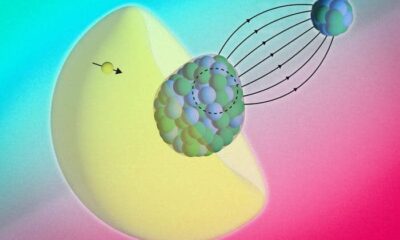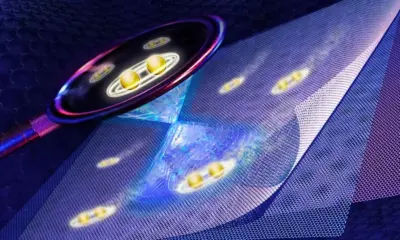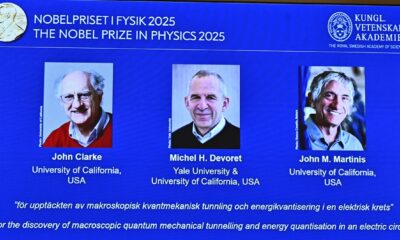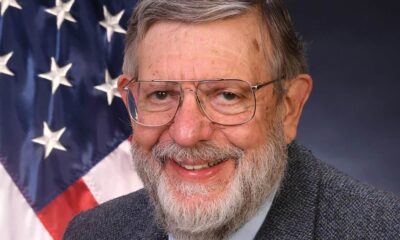Science
MIT Scientists Achieve Breakthrough in Double-Slit Experiment
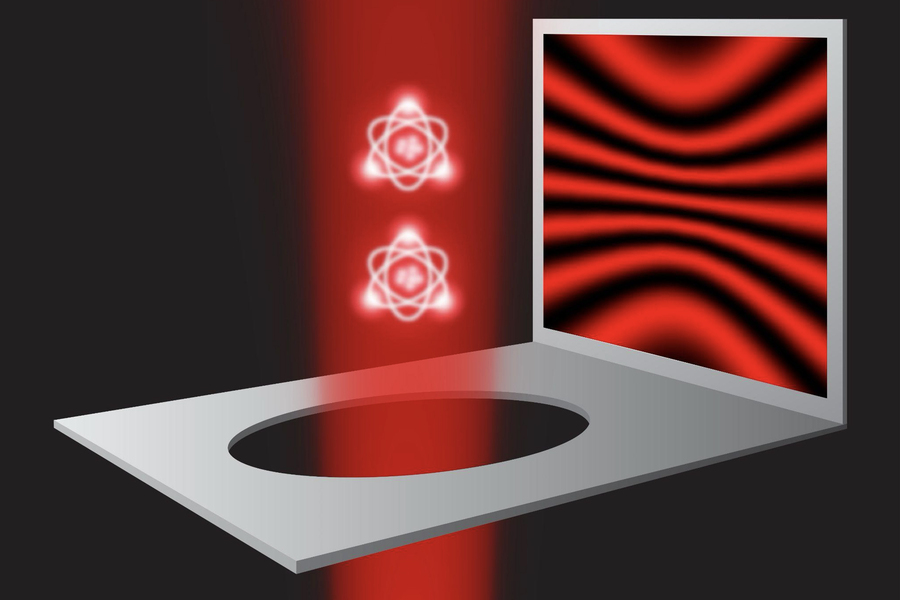
Researchers at the Massachusetts Institute of Technology (MIT) have conducted the most precise test of the renowned double-slit experiment to date. By employing two single atoms as slits, the team successfully inferred the path of a photon through subtle measurements of the atoms’ properties following photon scattering. The findings aligned with the predictions of quantum theory, revealing interference patterns when no path information was available and distinct bright spots when it was.
The double-slit experiment, originally performed by Thomas Young in the early 1800s, showcases a fundamental aspect of quantum mechanics. The experimental setup is straightforward: light is directed towards two slits in a barrier, leading to intriguing outcomes based on observation. If the light passes through the slits without being observed, it creates an interference pattern of alternating bright and dark fringes, akin to ripples on water. Conversely, if the path of the light is observed, the interference pattern vanishes, leaving only two bright spots.
Revisiting Quantum Foundations
This phenomenon suggests that the behavior of light shifts between wave and particle forms depending on whether or not it is observed. This concept troubled Albert Einstein, who debated the implications of this observation with physicist Niels Bohr. Einstein argued that observation introduces noise, which could explain the disappearance of fringes. He proposed that if the slits were affixed to springs, their recoil could reveal the photon’s path without collapsing the interference pattern. Bohr, however, maintained that accurately measuring the recoil would disrupt the positions of the slits, thereby erasing the interference—a principle he termed complementarity. His view posited that quantum systems could only exhibit wave-like or particle-like behavior, never both simultaneously.
Despite numerous iterations of the double-slit experiment since Bohr and Einstein’s time, the inherent noise in practical setups has led to lingering questions about the fundamental nature of quantum mechanics. To commemorate the International Year of Quantum Science and Technology, physicists from Wolfgang Ketterle’s team at MIT took a significant step in experimental physics by directly implementing Einstein’s thought experiment. They cooled over 10,000 rubidium atoms to near absolute zero and arranged them in a laser-created lattice, allowing each atom to act as an individual scatterer of light.
Innovative Experimental Design
When a faint beam of light passed through this lattice, a single photon could scatter off an atom. Due to the faintness of the beam, the team faced the challenge of collecting sufficient data across multiple experimental cycles. “This was the most difficult part,” noted Hanzhen Lin, a PhD student at MIT. “We had to repeat the experiment thousands of times to collect enough data.”
The crux of the experiment involved controlling how much path information the atoms provided. By adjusting the laser traps, the researchers could manipulate the “fuzziness” of the atoms’ positions. Tightly trapped atoms maintained well-defined positions, which, in accordance with Heisenberg’s uncertainty principle, limited their ability to reveal information about the photon’s path, resulting in the appearance of interference fringes. Conversely, loosely trapped atoms exhibited greater position uncertainty, permitting movement that allowed an atom struck by a photon to retain a trace of that interaction. This faint record was sufficient to collapse the interference pattern, revealing only distinct bright spots.
In this groundbreaking study, the team advanced beyond previous experiments by removing the traps and allowing the atoms to float freely while still observing the results. This approach eliminated the possibility that the traps interfered with the observations, marking a significant evolution from Einstein’s spring-mounted slit concept. “I think this is a beautiful experiment and a testament to how far our experimental control has come,” remarked Thomas Hird, a physicist specializing in atom-light interactions at the University of Birmingham, UK, who was not involved in the study. “This probably far surpasses what Einstein could have imagined possible.”
The MIT research team is now exploring the implications of introducing two atoms per site in the lattice, anticipating that the interactions between these atoms may yield further intriguing results. The full details of their experiment are documented in the journal Physical Review Letters.
-

 World3 days ago
World3 days agoCoronation Street’s Shocking Murder Twist Reveals Family Secrets
-

 Entertainment4 months ago
Entertainment4 months agoKate Garraway Sells £2 Million Home Amid Financial Struggles
-

 Entertainment3 months ago
Entertainment3 months agoAnn Ming Reflects on ITV’s ‘I Fought the Law’ Drama
-

 Health3 months ago
Health3 months agoKatie Price Faces New Health Concerns After Cancer Symptoms Resurface
-

 Entertainment3 weeks ago
Entertainment3 weeks agoCoronation Street Fans React as Todd Faces Heartbreaking Choice
-

 World4 weeks ago
World4 weeks agoBailey Announces Heartbreaking Split from Rebecca After Reunion
-

 Entertainment6 days ago
Entertainment6 days agoTwo Stars Evicted from I’m A Celebrity Just Days Before Finale
-

 World6 days ago
World6 days agoKevin Sinfield Exceeds Fundraising Goal Ahead of Final Marathons
-

 Entertainment3 months ago
Entertainment3 months agoCoronation Street’s Carl Webster Faces Trouble with New Affairs
-

 Entertainment3 months ago
Entertainment3 months agoWhere is Tinder Swindler Simon Leviev? Latest Updates Revealed
-

 Entertainment4 months ago
Entertainment4 months agoMarkiplier Addresses AI Controversy During Livestream Response
-

 Science2 months ago
Science2 months agoBrian Cox Addresses Claims of Alien Probe in 3I/ATLAS Discovery

